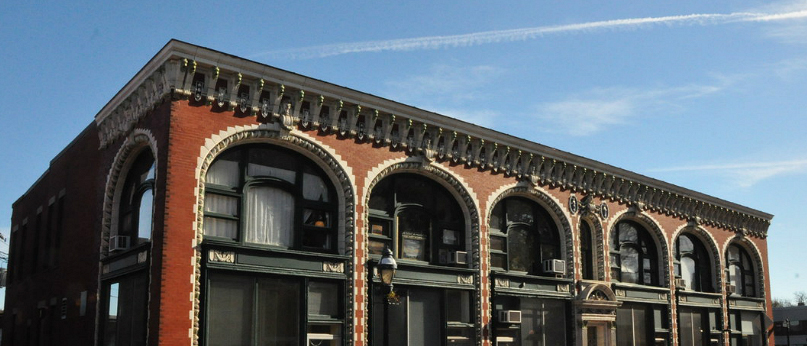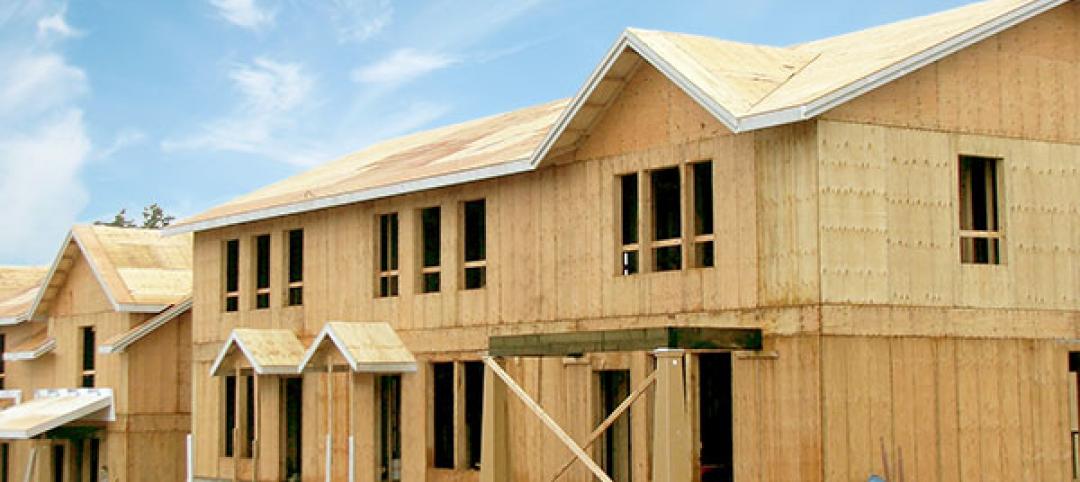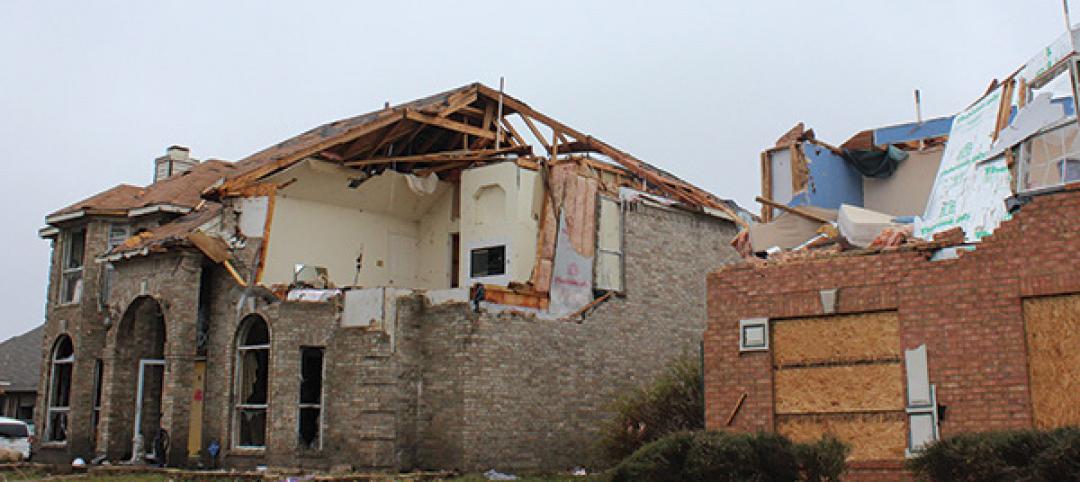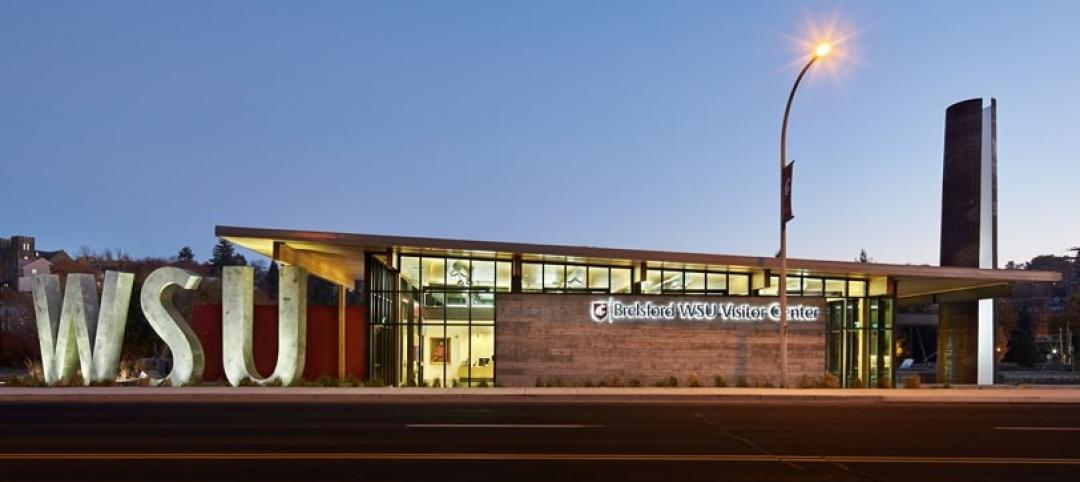The Audrain Building on Newport’s celebrated Bellevue Avenue was designed by New York architect Bruce Price in the early 1900s with intricate exterior detailing that exudes an enduring sense of luxury and tradition. Its recent renovation from a worn-around-the-edges modified office building into a car museum and upscale work space affirms its role as gilded historian, with an authentic blend of vintage charm and high-end appeal that has anchored this block of the Newport National Historic Landmark District for more than a century.
On the high-ceilinged first floor, golden-era automobiles and muscle cars will glisten through full-height windows. Above, new offices make better use of the space while maintaining the particular air of elegance that's expected of this location.
But getting to that point required some heavy lifting from a new, more robust building frame.
Strong Support
Upon completion, the car museum will house a range of vintage autos, including a WWII-era vehicle weighing in at one-and-a-half tons. Engineer Mike Camera of Camera/O’Neill Consulting Engineers knew that the original 2x12 flooring system would need to be removed and replaced to accommodate the additional weight.
The team at Parker Construction kept the outer shell and the original brick bearing walls, which divide the basement into six sections. On the ground floor, the structure was framed with steel columns and then 20-foot, 3-1/2-inch-by-9-1/2-inch glulam beams from Anthony Forest Products, spaced 12 inches on center, spanning each bay. The glulam not only accomplished the span requirements for the frame, but also was more readily available than other framing alternatives the design team considered.

Though the beams will be largely unseen in the low basement storage area and were coated with fire retardant, “The glulam was milled so well, we could have left them exposed,” says David Louttit, project manager at Parker Construction.
Structural-rated Douglas-fir 2x6 timbers run perpendicular to the glulam beams, with ¾-inch tongue-and-groove CDX plywood in between. For the second-floor frame, exposed steel trusses provide an industrial look.
Vintage Feel
While the project sports a new frame, the team took great care to preserve as many of the original decorative elements as possible, including ornamental metal and millwork. The front façade features the original brick, intricate terracotta around the windows, and similarly ornate roof cornices. The arch-top windows reach from the first floor through to the office space upstairs. A new set of bi-fold doors, fabricated to reflect the original windows, provides a wide entrypoint for the display vehicles.
Along with the challenges of preserving the look and beefing up the frame, the construction team faced severe time constraints: a schedule with less than half the normal turnaround time. To accommodate, Louttit had crews on site 16 hours a day, seven days a week; they also shrink-wrapped the structure to eliminate the weather variable.
“Our company specializes in investing in employees willing to give 110 percent,” says Louttit. “So we can get it done faster while working closely with the architect to ensure each element, from the structure to the decorative work, is exact and precise.”
This level of care befits the Audrain Building, whose architectural details have graced its corner of Newport's famed historic district for more than a century.
To read more case studies on commercial projects featuring engineered wood structural framing, become a member of APA Designers Circle at www.apawood.org/designerscircle. A free online community for architects, engineers, and other members of the commercial building industry, Designers Circle provides timely information, technical resources, continuing education, and recommendations for innovative wood-frame construction.
More from Author
Mark Halverson | Oct 26, 2016
Compelling conversations about wood: East and West Coast regional challenges
Fast-rising designers Ben Kasdan and Blake Jackson offer candid perspectives from both coasts on the merits—and challenges—of designing with wood and compare notes on how architects can change perceptions by dreaming big and pushing boundaries.
Mark Halverson | Oct 13, 2016
Engineered wood provides sustainable options, cost savings, and design flexibility
Designers choose engineered wood to deliver strength, stability, and a sustainable solution for complex structural designs
Mark Halverson | Jul 21, 2016
Economical, energy-efficient roof assemblies
Not all roof and ceiling assemblies are created equal, especially when it comes to energy performance.
Mark Halverson | Jul 5, 2016
Takeaways from 2015 Texas tornadoes: Construction details make a difference
Stronger building components combined with more intentionally constructed connections can mean the difference between buildings that withstand tornadoes and those that don’t.
Mark Halverson | Nov 20, 2015
Schooling the visitor
Exposed glulam and other engineered wood products help WSU tell its technology story
Mark Halverson | Aug 25, 2015
Engineered wood helps meet booming demand for multifamily projects
Multifamily housing starts reached 358,000 in 2014, a 16 percent increase over 2013 and the highest total since 2007
Mark Halverson | Jul 29, 2015
Glulam provides aesthetic, structural, and safety solution for Appleton Mills project
The Appleton Mills complex includes 5 million square feet of space, with an original structure built in the 1870s and another building added in 1906
Mark Halverson | Jun 30, 2015
Which Is More Efficient: Wood Walls or Steel and Masonry With Continuous Insulation?
By nature, wood has nearly four times the thermal resistance of steel or masonry
Mark Halverson | Jun 5, 2015
Exposed glulam framework offers quiet complement to Jackson Hole airport’s mountain backdrop
A three-phase expansion and renovation, which began in 2009, nearly doubled the size of the aviation hub; the only one located in a national park
















